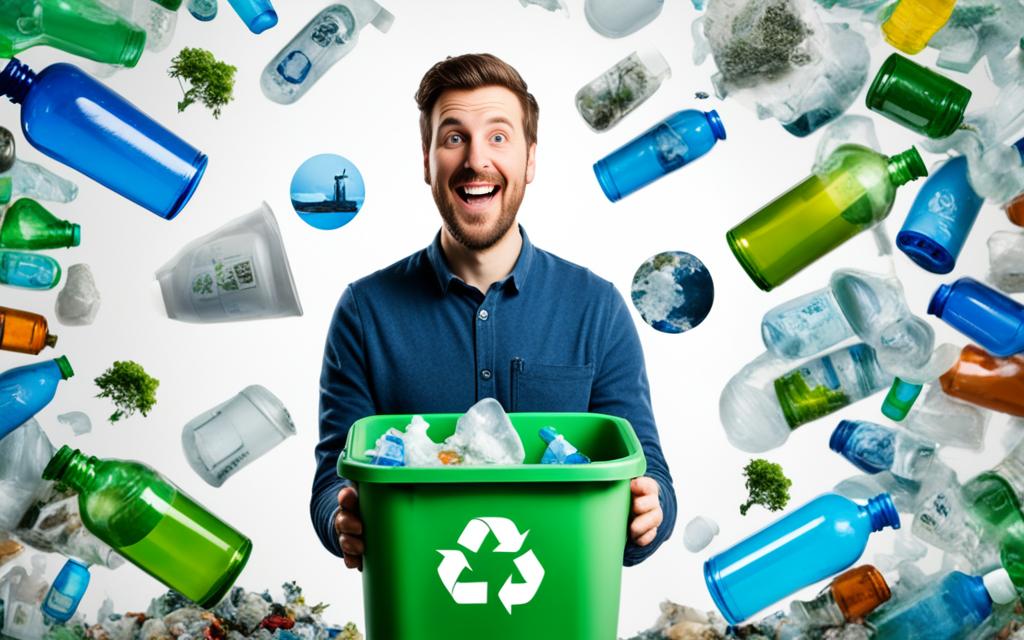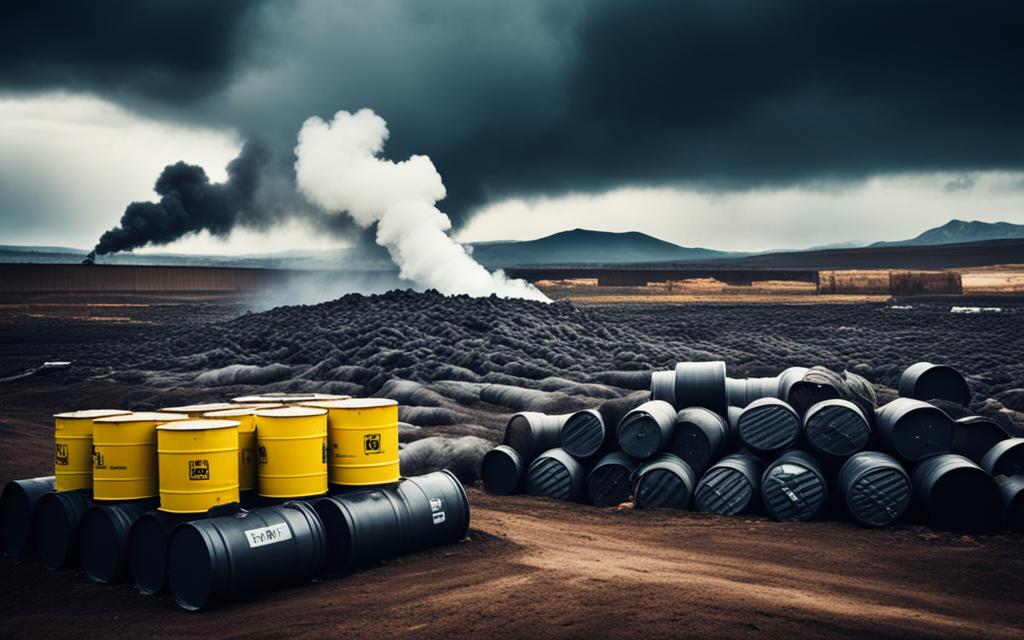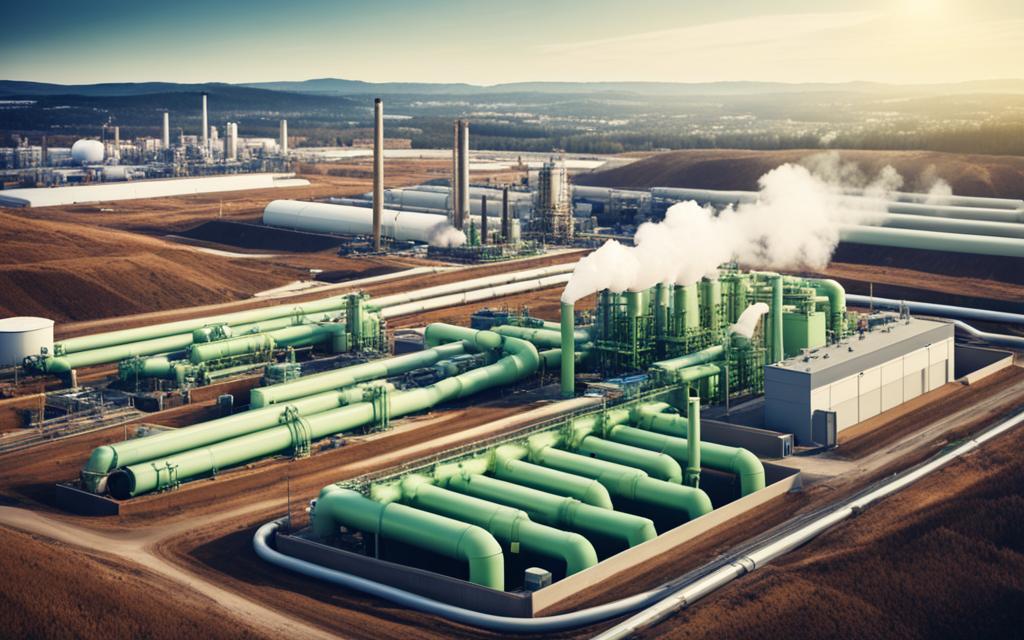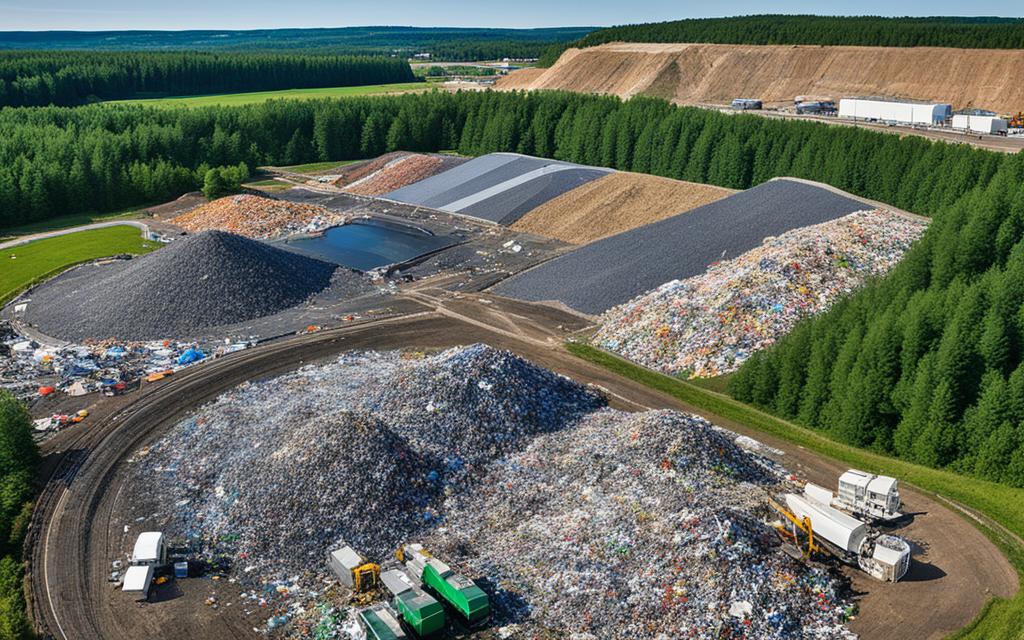Waste management serves as a pivotal pillar for environmental sustainability.
The U.S. has traditionally made significant strides in evolving waste management practices.
This dedicates itself to dissecting the traditional disposal methodologies deployed in waste management and sheds light on their consequential environmental impacts.
The spectrum of traditional waste management methodologies encapsulates numerous techniques.
These include landfills, incineration, and recycling, alongside composting, hazardous waste management, waste-to-energy initiatives, and landfill gas recovery processes.
Each method possesses distinctive attributes and indispensably contributes to surmounting disposal-related challenges.
Grasping the ramifications of these conventional disposal techniques remains imperative for formulating efficacious waste management tactics.
This necessitates thoroughly assessing their environmental repercussions, resource conservation capabilities, and inherent challenges.
Such an understanding paves the way for enlightened, sustainable waste-handling decisions.
Embark with us on an exploratory journey through the labyrinth of U.S. waste management, scrutinizing the advantages and limitations of conventional disposal techniques.
Our objective is to unveil pathways towards enhanced waste management paradigms.
By meticulously examining each technique, we aim to engender a future that is both greener and more sustainable.
Key Takeaways:
- Conventional waste management practices in the U.S. consist of various techniques, including landfills, incineration, recycling, composting, hazardous waste management, waste-to-energy conversion, and landfill gas recovery.
- Understanding the environmental impacts and resource conservation potential of each technique is essential for implementing effective waste management strategies.
- Exploring the strengths and weaknesses of conventional disposal techniques can help identify opportunities to improve waste management practices and create a sustainable future.
Landfills: The Dominant Waste Disposal Method
In the United States, landfills are the foremost strategy for waste disposal.
They significantly contribute to the nation’s waste management efforts. Despite their utility, landfills introduce a range of environmental issues.
The environmental ramifications of landfills are profound, leading to pollution and ecological dangers.
Methane, released during waste decomposition, is a critical concern due to its greenhouse effect.
Landfills have been identified as one of the leading sources of methane emissions in the United States. Methane capture and management are critical in mitigating the environmental impact of landfills and reducing greenhouse gas emissions.
The decomposition of organic waste in landfills signifies a challenge and shows the need for improved waste management.
Organic materials decompose slowly, occupying excessive space and releasing toxic substances over time.
Adopting landfill gas recovery systems, which enable methane’s conversion into energy, is essential to combating these issues.
Enhanced recycling, waste diversion, and waste-to-energy technologies also play pivotal roles.
These efforts aim to reduce landfill waste volumes.
Continuous innovation in waste management is imperative to lessen landfills’ environmental effects.
Such products like solvent recyclers are vital for sustainable futures, contributing to waste reduction and ecosystem conservation.
Incineration: Burning Waste For Energy
Incineration is an established method of disposing of waste by burning it to generate energy, a process known as waste-to-energy.
This methodology presents multiple benefits, particularly regarding efficient waste management and energy generation.
Significantly reducing landfill volume by incinerating waste is crucial.
This reduction allows for optimized resource use and conserves space.
Additionally, converting waste into electricity and heat through incineration contributes to energy source diversification.
Incineration aids in decreasing methane emissions, a potent greenhouse gas produced when waste decomposes in landfills.
Thus, it plays a vital role in climate change mitigation efforts.
Nonetheless, waste incineration faces considerable challenges, particularly regarding air quality.
The burning process emits various pollutants, including particulate matter and nitrogen oxides, that can negatively impact health and air quality.
To combat air pollution, incineration plants employ advanced emission control technologies.
These systems capture pollutants before their release into the atmosphere.
Strict regulatory standards guarantee that these facilities adhere to severe emission restrictions.
In summary, waste incineration is a sustainable approach for managing waste and generating energy.
It enables the recovery of valuable resources, conserves landfill space, and produces renewable energy.
However, implementing stringent emission controls is essential to minimize environmental and health impacts.
Recycling: Promoting Resource Conservation
Recycling is pivotal in waste management, championing resource conservation.
It diminishes the environmental ramifications of waste disposition, fostering efficient use.
By repurposing waste into new commodities, recycling not only saves precious resources but also curtails extraction and production activities detrimental to our planet.
The Recycling Process
The series of steps in recycling includes collection, sorting, processing, and manufacturing.
Initially, recoverable substances like paper, glass, plastic, and metals are gathered.
This happens via curbside programs, drop-off sites, or specialized bins.
Post-collection, these materials undergo meticulous sorting by type and quality, a step critical for effective recycling.
Following sorting, materials are processed—cleaned, shredded, or melted—tailored to their specific make-up.
This preparation is crucial for the next phase, manufacturing, where they’re reborn as new products.
Recycled paper, for example, becomes newspapers or packaging, while plastics might transform into bottles or other items.
Recycling Rates In The United States
In the United States, recycling rates have witnessed a consistent upsurge, echoing an enhanced collective recycling consciousness.
As per the Environmental Protection Agency (EPA), 2018 saw a recycling rate of 32.1%.
This signifies that about a third of municipal solid waste was recycled, diverting it from landfills or incinerators.
Yet, the journey towards higher recycling rates continues.
It necessitates sustained educational endeavors on recycling’s merits and accurate practices.
Moreover, the development and endorsement of formidable recycling infrastructures and policies at all governmental levels are essential.
The Benefits Of Recycling For Sustainable Waste Management
Recycling proffers multiple advantages for sustainable waste handling and environmental protection.
It significantly lowers the demand for raw materials, thereby shielding natural resources and lessening the harm from their extraction.
This propels us towards a circular economy, minimizing our ecological footprint.
Moreover, recycling slashes the volume of waste relegated to landfills or incinerators, mitigating greenhouse gas release and air pollution.
This diversion extends the lifespan of existing landfills and obviates the need for new ones.
Additionally, recycling is energy efficient. Using recycled materials typically consumes less energy, thus reducing carbon emissions and endorsing a sustainable energy paradigm.
“Recycling not only conserves valuable resources but also reduces the need for extraction and manufacturing processes that can be harmful to the environment.”
Recycling is fundamental in fostering resource preservation, diminishing waste, and alleviating the environmental toll of consumption.
By adopting recycling, we pave the way towards a sustainable legacy for future generations.

Composting: Natural Decomposition For Organic Waste
Composting embodies an eco-friendly approach to managing waste by leveraging organic decomposition.
This method circumvents the accumulation of waste in landfills, transforming organic substances into nutrient-dense soil enhancements.
It taps into nature’s inherent ability to recycle and rehabilitate organic matter.
Engaging in composting activities ranges from domestic undertakings with a backyard compost container to extensive operations at commercial composting centers.
The underlying principles of composting are consistent across different scales.
They involve the amalgamation of organic refuse, including kitchen scraps, lawn clippings, and agricultural leftovers, with carbon-rich materials like dead foliage and wood particles, facilitating a balanced mix of nitrogen and carbon elements.
Microorganisms such as bacteria and fungi, alongside earthworms, propel the conversion of organic material into humus, a substance similar to soil.
This transformation is the outcome of intricate biological and chemical processes.
During decomposition, the generated heat reaches levels capable of neutralizing harmful pathogens and weed seeds.
Composting’s advantages extend beyond mere waste diminution.
It yields compost, a substance that exponentially elevates soil quality and texture.
Incorporating compost into gardens, crop fields, or turf escalates the soil’s capacity to retain moisture, avail nutrients, and enhance general soil well-being.
It fosters vigorous plant development, curtails the reliance on chemical fertilizers, and fortifies sustainable farming methodologies.
Moreover, composting plays a vital role in alleviating greenhouse gas discharges.
Organic waste in landfills degrades without oxygen, emitting methane, a highly impactful greenhouse gas.
By rerouting organic waste from landfills to compost systems, the aerobic decay process is promoted, thereby substantially lowering methane release and mitigating the impacts of climate change.
Composting serves as an invaluable element in waste management. It utilizes natural decay processes to convert waste into a beneficial asset. Through embracing composting practices, communities and individuals partake in soil enhancement, waste reduction, and fostering an environmentally sustainable future.
Hazardous Waste Management: Mitigating Environmental Risk
Hazardous waste poses significant environmental risks that require specialized management.
It is crucial to understand the challenges associated with hazardous waste disposal and implement proper waste management practices to protect the environment and human health.
Hazardous waste is characterized by its potential to cause harm due to its toxicity, corrosiveness, flammability, or other hazardous properties.
Improper handling, storage, or disposal can lead to environmental contamination and serious health risks.
Regulatory compliance is pivotal in managing hazardous waste.
Agencies like the Environmental Protection Agency (EPA) enforce strict guidelines to ensure safe disposal practices.
These aim to minimize environmental harm and safeguard public health.
To comply, businesses and industries must effectively identify, handle, store, transport, and dispose of hazardous waste.
This involves secure permits, waste management plans, and safety measures to prevent leaks, spills, or accidents leading to environmental damage.
Proper Hazardous Waste Disposal Methods
Proper disposal of hazardous waste is vital to prevent environmental contamination and minimize the risks associated with these materials. Common disposal methods include:
- Incineration: This method safely incinerates waste at high temperatures, reducing its volume and neutralizing hazardous components. It is especially effective for certain hazardous waste types, like chemicals or lab residues.
- Chemical Treatment: Hazardous waste undergoes chemical processes to neutralize or alter its hazardous properties. This is typically used for liquid wastes contaminated with toxins.
- Secure Landfills: These specially designed landfills prevent leakage or seepage into the environment. They incorporate multiple protective layers and systems to contain hazardous materials securely.
Businesses and industries must select the appropriate disposal method based on waste type and characteristics.
Consultation with environmental experts and waste management professionals ensures safe, compliant disposal practices.

To mitigate environmental risks from hazardous waste, businesses and industries must prioritize regulatory compliance and proper waste management practices. Implementing suitable disposal methods and following regulatory guidelines minimizes hazardous waste’s impact, protecting communities and the environment.
Waste-to-Energy: Converting Waste To Power
Adopting waste-to-energy technologies heralds new prospects for transforming waste into beneficial power.
These methods extract the latent energy within waste materials.
Consequently, they further renewable energy generation and waste mitigation initiatives.
The technique of waste incineration stands as a notable waste-to-energy application.
It utilizes the heat from burning waste to generate steam, which propels turbines to create electricity.
This strategy not only redirects waste from landfills but also secures a viable renewable energy source.
Anaerobic digestion represents another efficacious waste-to-energy approach.
Organic detritus, such as leftovers or farm waste, is broken down without oxygen, yielding biogas, chiefly methane.
This biogas serves as a fuel for generating electricity or as renewable natural gas.
Innovations like pyrolysis and gasification provide alternative routes for creating energy from waste.
Pyrolysis heats waste without oxygen to produce bio-oil, gas, and char.
Comparatively, gasification transforms waste into a synthesis gas usable for power or biofuel production.
Waste-to-energy innovations offer viable remedies for waste management and renewable energy creation. They allow us to divert waste from landfills and convert it into energy. This reduces the environmental repercussions of waste while fulfilling our energy requirements sustainably.
Moreover, waste-to-energy mechanisms aid in waste reduction by decreasing the amount of waste sent to landfills.
These technologies permit the extraction of value and energy from waste.
They present a sustainable tactic in waste administration.
In the drive towards a more ecological future, waste-to-energy technologies emerge as a vital solution.
Their deployment not only harvests renewable energy but also diminishes the environmental footprint of waste disposal.
They are essential to progressing sustainable waste management efforts.
Landfill Gas Recovery: Harnessing Methane For Energy
Landfills transcend mere waste collection points, evolving into significant methane gas sources.
These establishments bear a considerable share of responsibility for methane emissions, a greenhouse gas with immense global warming potential.
To counteract this, landfill gas recovery has become an indispensable strategy in waste management.
It aims to mitigate climate change through innovative practices.
The pivotal aspect of landfill gas recovery is methane capture.
This process entails withdrawing methane from landfills to repurpose it as an energy source.
Effectively capturing methane not only curtails greenhouse gas emissions but also harnesses a higher global warming impact than carbon dioxide.
Landfill gas recovery unfolds through multiple phases.
It begins with methane extraction via gas collection systems, employing either wells or vertical shafts.
Subsequent stages involve refining the methane to eliminate contaminants and moisture, thus priming it for energy conversion.
Post-purification, the methane finds utility in diverse energy manifestations.
Converting methane into electricity or heat through combustion facilitates the operation of local establishments or the supplementation of the power grid.
These landfill gas-to-energy projects highlight methane’s versatility as a renewable resource.
Employing landfill gas as a vehicular or industrial fuel presents another avenue.
Further refining sometimes converts methane into renewable natural gas (RNG), offering an eco-friendly alternative to conventional fossil fuels.
Such processes exhibit landfill gas’s potential in renewable energy landscapes.
Beyond environmental preservation, landfill gas recovery fosters economic growth.
Transforming methane into an energy commodity propels revenue generation and job opportunities within the renewable energy domain.
This symbiosis of ecological and economic benefits underscores landfill gas recovery’s significance.
By confronting environmental and economic challenges, landfill gas recovery plays a vital role in sustainable waste management. It reduces landfill methane emissions, converting them into valuable energy sources, thus promoting responsible resource utilization.
Technological advancements and supportive government policies are propelling landfill gas recovery forward.
These projects gain momentum, fueled by the dual objectives of environmental stewardship and economic viability.
Landfill gas recovery embodies the principle of converting waste into worthwhile resources through innovative energy solutions.
This transformation of landfill methane into energy exemplifies the potential for repurposing waste into beneficial resources.
Landfill gas recovery is a crucial strategy for diminishing greenhouse gas emissions and fostering a sustainable, circular economy.

Waste Reduction Strategies: Preventing Excessive Waste Generation
Effective waste management is critical, yet focusing on waste reduction strategies is essential.
Implementing techniques for waste reduction, practicing source reduction, and adopting sustainable consumption behaviors can substantially decrease excessive waste.
Thus, we contribute to a more sustainable, greener future.
Implementing Waste Reduction Techniques
Minimizing waste production is the goal of waste reduction techniques.
This strategy aims to prevent waste generation instead of managing after creation.
Through product redesign, use of reusable materials, and promotion of responsible packaging, both businesses and individuals can lessen their waste footprint significantly.
“Waste reduction techniques play a crucial role in sustainable waste management by addressing the root cause of excessive waste generation.” – Waste Reduction Expert
Practicing Source Reduction
Source reduction reduces waste at its origin through conscious decision-making and sustainable actions.
Opting for minimally packaged products, avoiding single-use items, and living by “less is more” reduces waste entering management systems.
This lessens landfills’ burden and curtails resource depletion.
Embracing Sustainable Consumption Practices
Sustainable consumption means choosing products that safeguard ecological and social resilience.
By selecting durable, environmentally friendly products, individuals aid in waste reduction.
Repairing and repurposing items also advances sustainable consumption habits.
“Sustainable consumption is not just about reducing waste; it’s about fostering a long-lasting relationship with our planet and its resources.” – Sustainable Living Advocate
Integrating waste reduction, source reduction, and sustainable consumption into our lives impacts waste generation profoundly.
These strategies reduce our environmental impact, preserve resources, and foster a more sustainable, ecologically aware society.
E-waste Management: Handling Electronic Waste Responsibly
The escalating use of electronic devices has heightened the concern for e-waste management.
E-waste, a term for discarded electronics like computers and smartphones, contains hazardous materials.
These materials can significantly harm the environment if not properly handled.
Disposing of electronic waste carefully mitigates environmental and health impacts.
E-waste recycling is a pivotal aspect of sustainable waste management.
It enables material recovery and lessens environmental degradation.
The disposal of e-waste presents numerous challenges.
Many people lack knowledge of proper disposal methods, leading to harmful practices.
Consequently, much e-waste is improperly dumped in landfills or sent to developing countries lacking proper disposal facilities.
E-waste Recycling Methods
Recycling e-waste entails a rigorous process of dismantlement and extraction.
The goal is to recuperate valuable materials and ensure the safe disposal of hazardous substances.
A prevalent method of e-waste recycling is mechanical shredding.
This technique breaks down devices into smaller fragments.
Subsequently, these fragments are organized and processed, allowing material recovery.
Alternatively, hydrometallurgical recycling employs chemical means to extract metals.
This method facilitates the retrieval of precious metals such as gold and silver.
Additionally, e-waste recycling conserves natural resources and diminishes the need for raw material extraction.
It prevents the emission of toxic substances, safeguarding soil, water, and air quality.
Potential Environmental Hazards
E-waste harbors hazardous substances that can inflict environmental damage if mishandled.
Inappropriate disposal can contaminate soil and water, pollute the air, and release toxins.
Heavy metals in e-waste, like lead and mercury, can permeate soil and groundwater, endangering ecosystems and human health.
These toxins may build up in the food chain, causing enduring environmental and health issues.
Burning e-waste can emit dangerous gases and particles, deteriorating air quality and harming respiratory health.
Thus, air pollution has become a significant concern.
Implementing effective e-waste management and recycling practices is crucial to mitigating these risks.
Public awareness, regulatory measures, and accessible collection systems can promote responsible electronics recycling.
“Proper e-waste management is crucial to protect the environment and human health. Recycling electronic devices not only helps recover valuable materials but also reduces the negative impact of e-waste on our planet.” – John Anderson, Sustainability Expert
Construction And Demolition Waste: Sustainable Practices
The management of construction and demolition waste stands as a pivotal element of sustainable construction.
Efficiently handling this waste reduces environmental repercussions while fostering recycling and progressing toward a circular economy.
Recycling materials serves as a cornerstone in the domain of construction waste management.
Reclaiming materials from sites earmarked for construction or demolition conserves precious resources.
It also prevents excessive waste accumulation in landfills.
Strategies to minimize waste generation in construction settings are paramount.
Through meticulous planning, optimal material utilization, and the incorporation of waste reduction methods, it’s feasible to markedly lower waste generation during construction phases.
“Sustainable construction practices aim to minimize the negative environmental impacts of construction activities and promote resource efficiency.”
Advocacy for sustainable practices within the construction industry is imperative.
Integrating energy-efficient designs, selecting eco-friendly materials, and striving for green building certifications are crucial.
These considerations, initiated at the planning stage, substantially diminish the environmental footprint of construction projects.
Recycling Construction Materials
Recycling construction materials underscores a sustainable approach to managing construction waste.
The process of collecting and repurposing materials like concrete, wood, metal, and asphalt converts waste into new products.
It also functions as an aggregate for new construction endeavors, curbing the need for untouched resources and conserving energy and water otherwise needed for new material production.
Promoting Waste Reduction
Minimizing waste in construction requires effective implementation of waste-reduction measures.
These include maximizing material efficiency, curtailing packaging waste, and adopting improved construction methods.
Techniques such as prefabrication considerably diminish waste by reducing the need for on-site alterations and enhancing accuracy.
Implementing Sustainable Construction Practices
Sustainable construction involves multifaceted practices throughout the building design and execution phases.
These practices span the design and construction of high-energy-efficient buildings, the utilization of sustainable materials, and the application of renewable energy solutions.
Adopting these measures reduces environmental impacts, boosts energy efficiency, and fosters a sustainable built environment.
Crucially, the role of construction and demolition waste management in sustainable construction cannot be overstated.
Emphasizing recycling, waste reduction, and adopting sustainable practices propels the construction sector towards an eco-friendly, more resource-efficient future.
Examining the prevailing waste disposal methods in the United States has revealed several critical insights.
The predominance of landfills as the chief waste disposal strategy is clear, yet their detrimental environmental ramifications and operational challenges are undeniable.
Incineration, while providing opportunities for energy recovery, remains mired in controversy due to its implications for air quality.
Conversely, recycling and composting are identified as efficacious means of waste management, contributing significantly to resource preservation and soil enhancement.
These methods not only support sustainable practices but also play a crucial role in enriching soil quality.
Furthermore, the handling of hazardous waste demands acute focus to neutralize potential threats to the environment and adhere to stringent regulations.
The promise of waste-to-energy innovations, landfill gas extraction techniques, and comprehensive waste minimization approaches illuminate the horizon of waste management.
Implementing these advanced practices is vital for reducing waste, exploiting renewable energy sources, and safeguarding our ecosystem.
